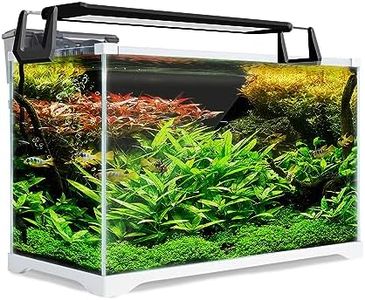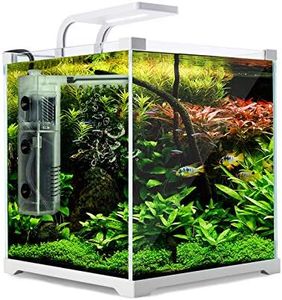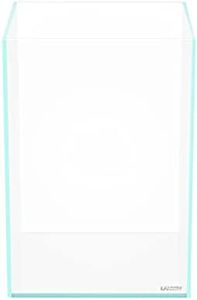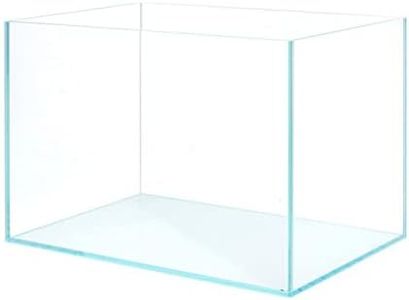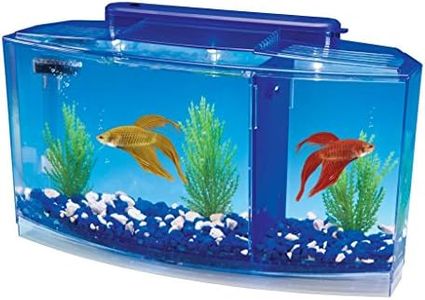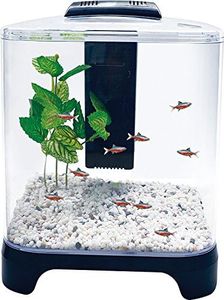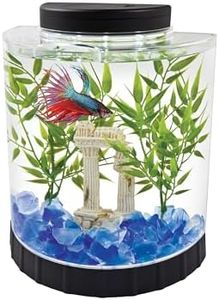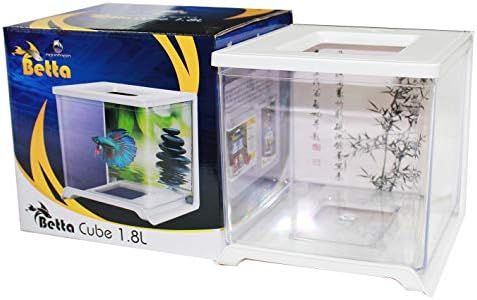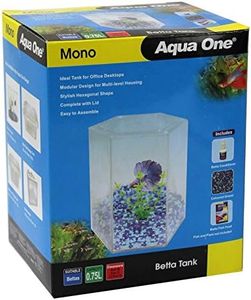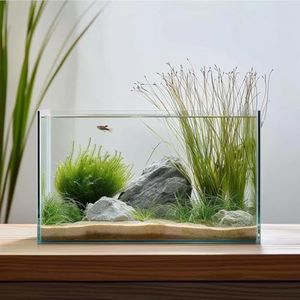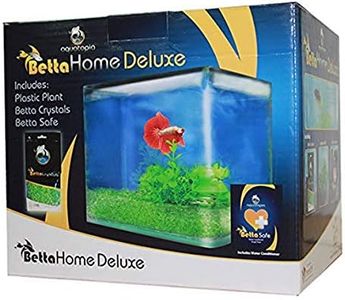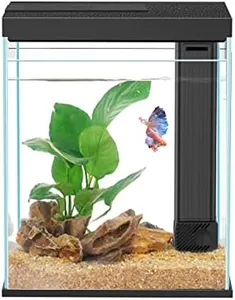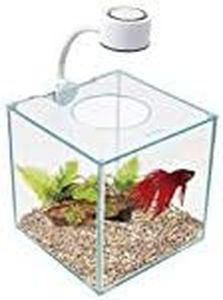We Use CookiesWe use cookies to enhance the security, performance,
functionality and for analytical and promotional activities. By continuing to browse this site you
are agreeing to our privacy policy
10 Best Betta Tanks
From leading brands and best sellers available on the web.By clicking on a link to a third party's website, log data is shared with that third party.
Buying Guide for the Best Betta Tanks
Choosing a betta tank is an important step towards providing a healthy and stimulating environment for your fish. Bettas have specific habitat needs, and the right tank will make maintenance easier and keep your fish happy and vibrant. When evaluating betta tanks, look beyond just the looks—think about what will make both the fish and the maintenance process comfortable and sustainable for you.Tank SizeTank size refers to the volume of water the aquarium holds, usually measured in gallons or liters. This spec is crucial because bettas need space to swim and explore, and insufficient room can lead to stress or health issues. Tanks under 2 gallons are considered very small and generally not recommended because they don't provide adequate swimming space or stable water conditions. Tanks between 2 and 5 gallons are a popular minimum and can work for a single betta with careful maintenance but will need frequent cleaning. Tanks above 5 gallons are better for water stability and allow for more enrichment options. Choose a size that fits your available space and time for upkeep, but always give your betta as much room as possible.
FiltrationFiltration is the process of keeping the water clean and clear of harmful waste using a filter. For bettas, a gentle filter is important because strong currents can stress them, as they aren't strong swimmers. Some tanks come with built-in filters that are designed to be low-flow and betta-safe, while others require you to add your own. If a filter is too powerful, it can harm the betta's delicate fins or make swimming difficult. Always look for adjustable or gentle filters, and if your tank doesn’t have one, be prepared to do more frequent water changes to maintain a healthy environment.
Lid/CoverA lid or cover prevents your betta from jumping out of the tank, which they are known to do. It also helps reduce evaporation and keeps dust or other contaminants out of the water. Lids can be plastic or glass and may offer feeding holes for convenience. If the tank comes open-topped, you'll need to be extra careful and never fill the water too high. Make sure the cover fits securely, especially if the tank will be in a busy area or near children and pets.
Shape and AccessibilityThe shape of a tank affects both the water surface area and accessibility for cleaning and decorating. Rectangular tanks provide more surface area and swimming room, which is good for gas exchange and for your betta's comfort. Bowls or tall, narrow tanks may look appealing but often limit surface area and can be harder to clean. Accessibility is important for regular maintenance, so choose a tank with an opening large enough for easy cleaning and adding decorations or plants.
Material (Glass or Acrylic)Betta tanks are commonly made from glass or acrylic. Glass tanks are scratch-resistant and usually heavier, providing better durability against accidental bumps but can break if dropped. Acrylic tanks are lighter, less likely to break, and often come in creative shapes, but they can scratch easily. Consider your home environment and whether the tank will need to be moved often or if there's a risk of knocks. Either material can work well as long as it’s sturdy and offers a clear view of your betta.
LightingLighting in a betta tank helps you see your fish clearly and can also benefit live plants if you choose to add them. Some tanks come with built-in LED lighting, while others require you to add a separate light. Betta fish appreciate a day and night cycle, so having the ability to turn lights on and off is helpful. If you plan to keep live plants, make sure the lighting is suitable for plant growth; otherwise, standard lighting is enough for illuminating your betta and their surroundings.
